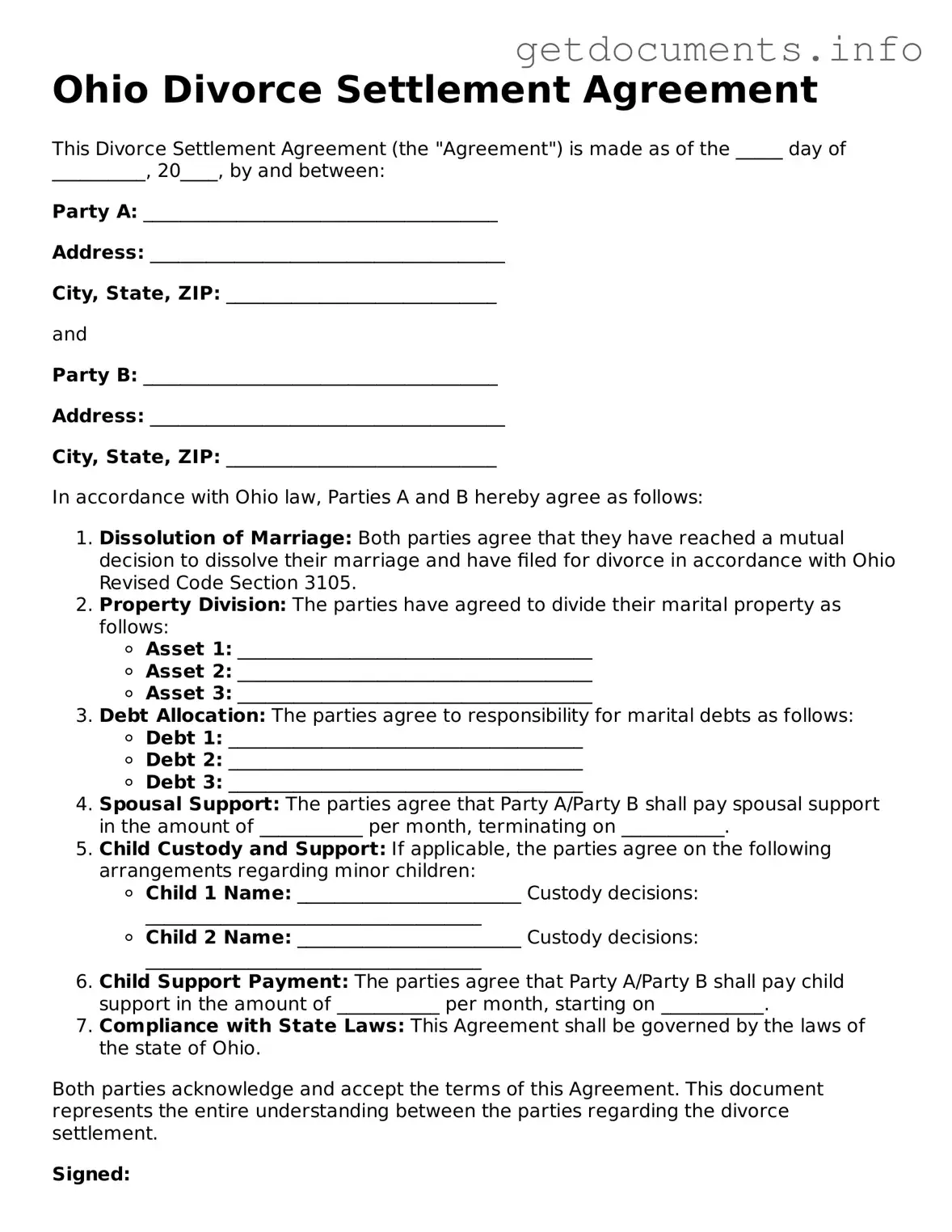Free Divorce Settlement Agreement Template for Ohio
The Ohio Divorce Settlement Agreement form is a legal document that outlines the terms of a divorce between two parties. This agreement covers important aspects such as property division, spousal support, and child custody arrangements. Completing this form is essential for ensuring that both parties are on the same page and that the divorce process runs smoothly.
Ready to get started? Fill out the form by clicking the button below.
Access Divorce Settlement Agreement Editor
